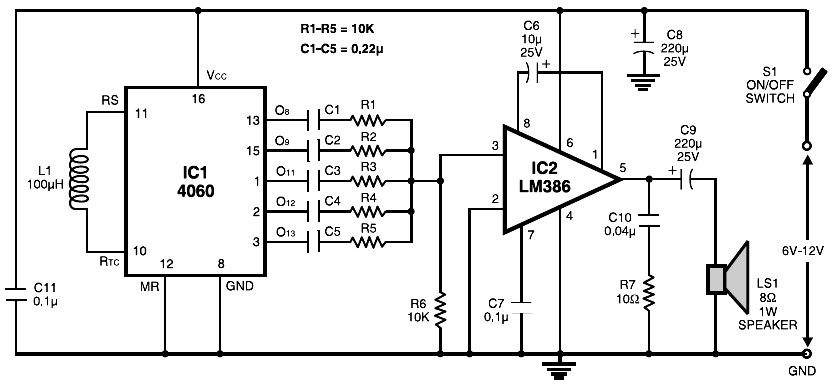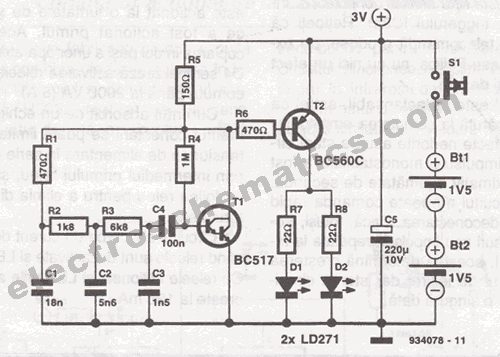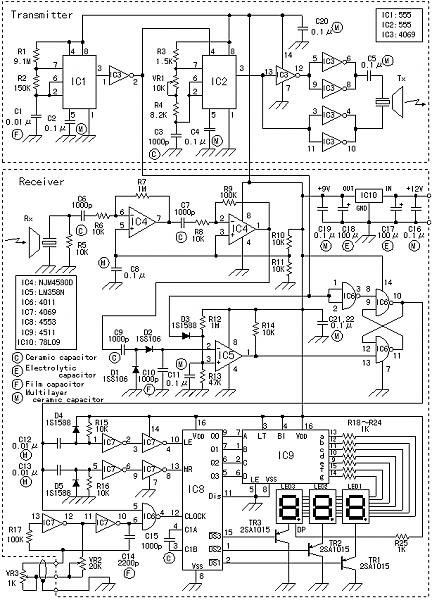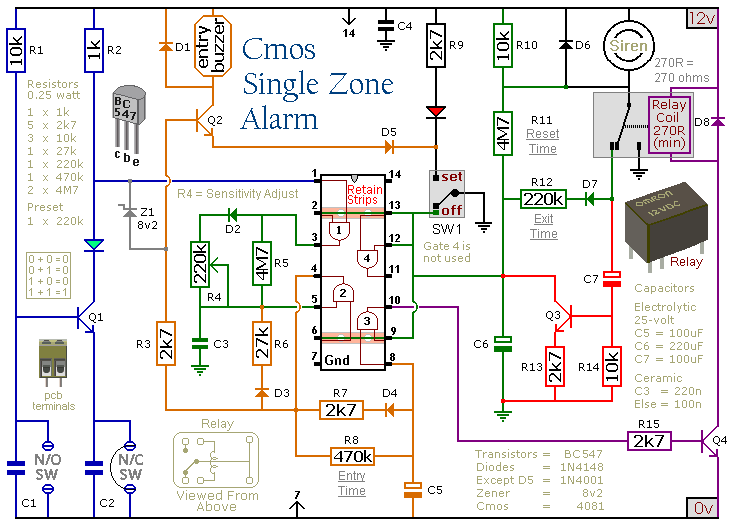
Power supply circuit design

C1 is a 1000 microfarad aluminum electrolytic capacitor. For loads less than 100mA, a 220 microfarad capacitor can be substituted. The voltage rating should be 2.5 times the output voltage.
C1 serves as a critical component in various electronic circuits, particularly for power supply smoothing and decoupling applications. The 1000 microfarad rating indicates a significant capacitance value, which allows it to effectively store and release energy as needed. This characteristic is especially beneficial for stabilizing voltage levels in circuits that experience fluctuations.
In scenarios where the load current is below 100mA, substituting the original capacitor with a 220 microfarad capacitor is permissible. This substitution can reduce the physical size and cost of the capacitor while still maintaining adequate performance for low-power applications. However, it is essential to ensure that the lower capacitance does not compromise the circuit's performance, particularly in terms of voltage stability and transient response.
The voltage rating of C1 is specified to be 2.5 times the output voltage, ensuring that the capacitor can withstand voltage spikes and surges without risk of breakdown. For example, if the output voltage of the circuit is 10V, the capacitor should have a voltage rating of at least 25V. This safety margin is crucial for maintaining the reliability and longevity of the capacitor in operation.
Overall, careful consideration must be given to the selection of C1, including its capacitance value, load current, and voltage rating, to ensure optimal performance in the intended application.C1=1000 Micro Farad aluminum electrolytic capacitor (For loads less than 100mA you can sustitute with 220 microfards capacitor), Voltage rating = 2. 5 times of Output Voltage. C1 = 1000 Micro Farad aluminum electrolytic capacitor(For loads less than 100mA you can sustitute with 220 microfards capacitor).
Voltage rating = 2. 5 times of Output Volta ge. 🔗 External reference
C1 serves as a critical component in various electronic circuits, particularly for power supply smoothing and decoupling applications. The 1000 microfarad rating indicates a significant capacitance value, which allows it to effectively store and release energy as needed. This characteristic is especially beneficial for stabilizing voltage levels in circuits that experience fluctuations.
In scenarios where the load current is below 100mA, substituting the original capacitor with a 220 microfarad capacitor is permissible. This substitution can reduce the physical size and cost of the capacitor while still maintaining adequate performance for low-power applications. However, it is essential to ensure that the lower capacitance does not compromise the circuit's performance, particularly in terms of voltage stability and transient response.
The voltage rating of C1 is specified to be 2.5 times the output voltage, ensuring that the capacitor can withstand voltage spikes and surges without risk of breakdown. For example, if the output voltage of the circuit is 10V, the capacitor should have a voltage rating of at least 25V. This safety margin is crucial for maintaining the reliability and longevity of the capacitor in operation.
Overall, careful consideration must be given to the selection of C1, including its capacitance value, load current, and voltage rating, to ensure optimal performance in the intended application.C1=1000 Micro Farad aluminum electrolytic capacitor (For loads less than 100mA you can sustitute with 220 microfards capacitor), Voltage rating = 2. 5 times of Output Voltage. C1 = 1000 Micro Farad aluminum electrolytic capacitor(For loads less than 100mA you can sustitute with 220 microfards capacitor).
Voltage rating = 2. 5 times of Output Volta ge. 🔗 External reference





